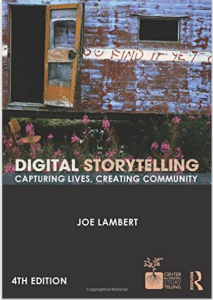A future business-woman’s plea
From the time we are little, we’re encouraged to push ourselves to be successful. Both little girls and little boys alike are told to work hard and achieve more. So why, then, are little girls also engrained with the idea that they can do all of these things that boys can do—if only they try harder? This resonates into our later years and I raise the question: Why do I have to try harder than my peers to be successful?
“So and so is so ambitious,” says the male who doesn’t know he’s insulting me.
After reading articles and articles by women who support the idea that being ambitious means being able to thrive in a male environment, I stumbled across a recent Time Magazine article, titled “Why Ambition Isn’t Working for Women”
The author of the piece, Kristin van Ogtrop, challenges, argues and defends the subject of women’s ambition with support from influential female leaders.
Lisa Shalett, chief marketing officer of Odyssey, said,
“Ambition needs care and feeding, having the kind of informal relationships where you understand ‘How do I navigate this path, what do I need to know, how can I get there?’ Men tend to be ambitious for things, for positions, for titles, for results. Women tend to be ambitious to be recognized for performance, to be valued, to be included, and maybe expect that good things will come from that.”
In a society where women are applauded for “having it all” and balancing work and home life, but men are rewarded for continuously getting corporate raises, we have to ask ourselves what is flawed. Only 4.6 percent of the Fortune 500 are women and it is not because women are not being ambitious, it’s because we are expected at some point to not be.
Women have continued over the years to graduate higher education in greater number than men with generally higher degrees, and the numbers continue to climb. So, why if we are pushing ourselves further earlier does the outcome years later leave us dragging in the dust?
Many women in their late twenties, if they haven’t already, are pressured or personally ready to begin a family. So, at your current corporate position you and your male equal are competing toward a raise–but sorry–you just had a baby and everyone knows you can’t handle both.
Women who choose a life completely career driven, whether a family accompanies them on their journey or not, may not be considered successful. You’re considered ‘ambitious’. She’s a CEO of a company? Wow…she really went for it didn’t she, she must be pretty ambitious. See where the backhand comes around the corner before the sentence is finished?
“When you say ‘ambitious woman’ there’s a judgy tinge to it that doesn’t happen for men,” said Stephanie Clifford, a New York Times reporter and the author of the new novel Everybody Rise. “If all you hear about a woman is that she’s ambitious, you probably wouldn’t want to hang out with her.”
Higher position jobs are not being held by women, because we still live in a man’s society. Household roles have yet to acknowledge ambition as a norm for women, and compassionate house-dad as a norm. If such ideas are so foreign and submissive then women will never take a majority of the Fortune 500 and men will continuously lose family time to careers.
Since Rosie the Riveter and the push to women in the work force, together as a whole women have made strides in their careers. Especially now with a push to challenge the skeptical ‘American Dream’ and question societal roles we are making efforts to change. Ogtrop states that one third of male millennials expect to split child care 50-50, compared to a 22% of Gen X men and the 16 percent of boomer men.
So an ambitious woman is still considered far less than that of an ambitious male but only because the definition of ambition and success differs for the two.
“Companies are failing to see that for women, ambition is about much more than the job. And is laser-focused career ambition at the expense of a rewarding personal life is what it takes to capture a seat in the proverbial corner office—well, many women would rather not sit there,” said Kristin Van Ogtrop.
I’m only 21 but I have made great strides in my life that I am proud of, many of those being career-setting moves. I haven’t decided if I want a husband or a family in my future but I have decided I want to be successful in my future career regardless of my gender. I want to be a man’s ambitious. I want to be called ambitious without it being insulting. So give me a while and call me successful, not ambitious.






